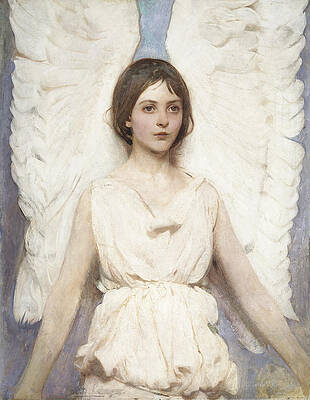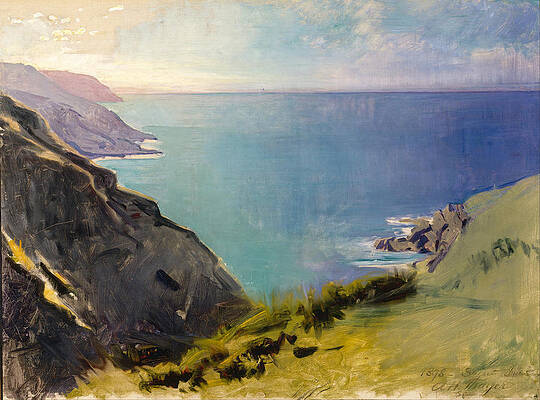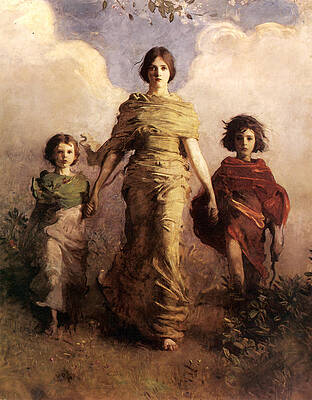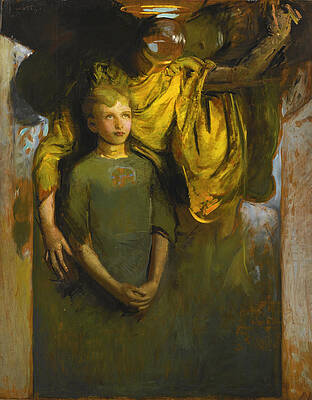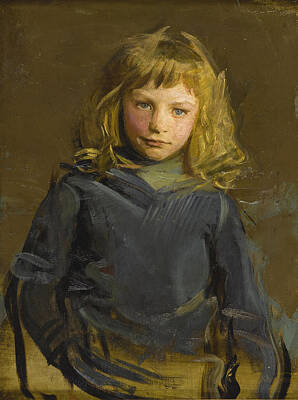Abbott Handerson Thayer
Paintings
Angel
Cornish Headlands
Mount Monadnock
The Sisters
My Children. Mary Gerald and Gladys Thayer
A Virgin
Study for Harry Whiting Nephew of the Artist
Roses
My Children
Hebe
Noon
Still Life
Winged Figure
Boy and Angel
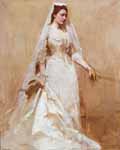

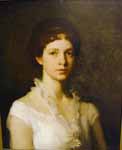
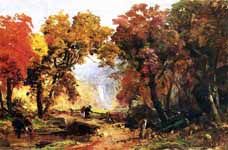
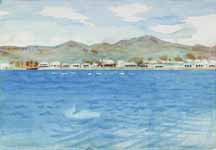
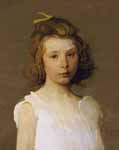
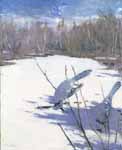
Blue Jays in Winter, study for book Concealing Coloration in the Animal Kingdom
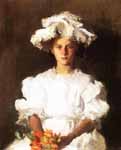
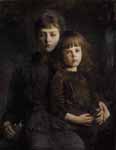
Brother and Sister (Mary and Gerald Thayer)

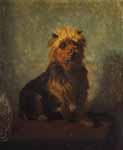
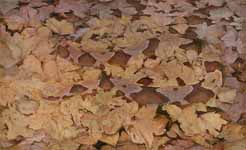
Copperhead Snake on Dead Leaves, study for book Concealing Coloration in the Animal Kingdom
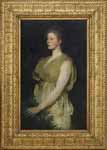
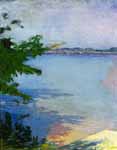
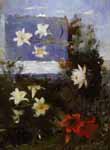
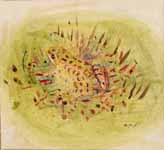
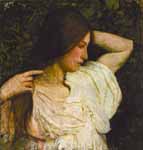
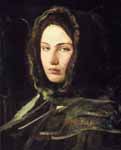
Girl in Fur Hood (Head of a Woman with Fur-Lined hood)
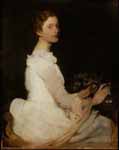
Girl in White (Margaret Greene)
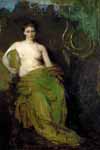
Girl in White (Margaret Greene)
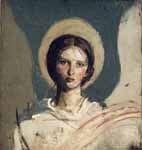
Girl in White (Margaret Greene)
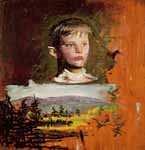
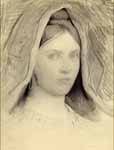
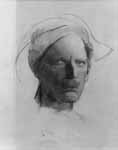
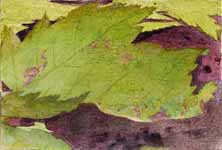
Heterocampa Biundata, Walker, study for book Concealing Coloration in the Animal Kingdom
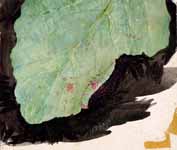
Heterocampa Biundata, Walker, study for book Concealing Coloration in the Animal Kingdom
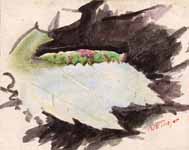
Heterocampa Biundata, Walker, study for book Concealing Coloration in the Animal Kingdom
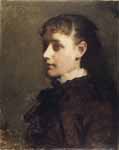
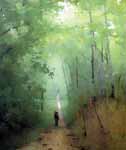
Landscape at Fontainebleau Forest
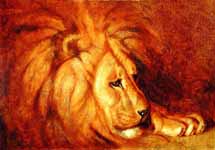
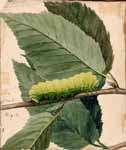
Lunar Caterpillar, study for book Concealing Coloration in the Animal Kingdom
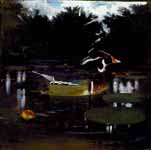
Male Wood Duck in a Forest Pool, study for book Concealing Coloration in the Animal Kingdom
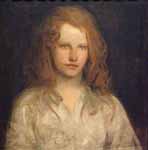
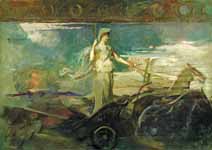

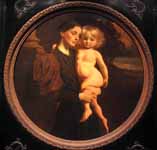
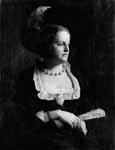
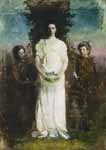
My Children (Mary, Gerald, and Gladys Thayer)
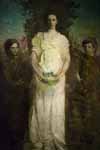
My Children (Mary, Gerald, and Gladys Thayer)
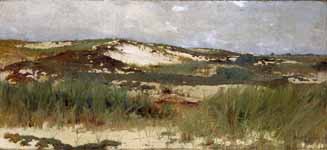


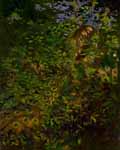
Peacock in the Woods, study for book Concealing Coloration in the Animal Kingdom
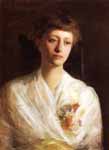
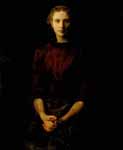
Portrait of a Lady (Mrs. William B. Cabot)
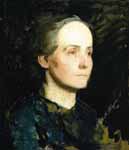
Portrait of a Woman (Miss Gertrude Bloede)
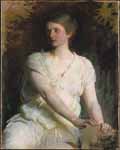
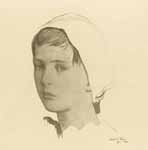
Portrait of a young woman (Boston Public Library)

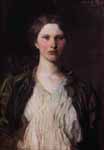
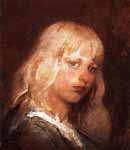
Portrait of Raphael Welles Pumpelly
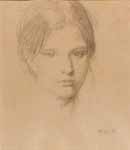
Portrait of the Artist's Daughter, Mary
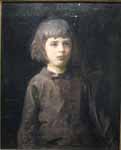
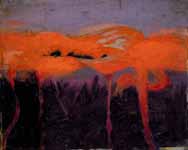
Red Flamingoes, study for book Concealing Coloration in the Animal Kingdom
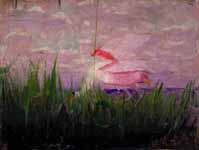
Roseate Spoonbill, study for book Concealing Coloration in the Animal Kingdom
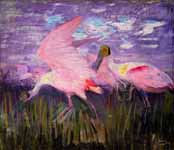
Roseate Spoonbills, study for book Concealing Coloration in the Animal Kingdom
Study For Harry Whiting Nephew Of The Artist
Fine Art Prints | Greeting Cards | iPhone Cases | Tote Bags | Clothing | Lifestyle | Beach ...
Abbott Handerson Thayer (August 12, 1849 – May 29, 1921) was an American artist, naturalist and teacher. As a painter of portraits, figures, animals and landscapes, he enjoyed a certain prominence during his lifetime, and his paintings are represented in the major American art collections. He is perhaps best known for his 'angel' paintings, some of which use his children as models.
During the last third of his life, he worked together with his son, Gerald Handerson Thayer, on a major book about protective coloration in nature, titled Concealing-Coloration in the Animal Kingdom. First published by Macmillan in 1909, then reissued in 1918, it may have had an effect on military camouflage during World War I. However it was roundly mocked by Theodore Roosevelt and others for its biased assumption that all animal coloration is cryptic.[1]
Thayer also influenced American art through his efforts as a teacher, training apprentices in his New Hampshire studio.
Early life
Thayer was born in Boston, Massachusetts. The son of a country doctor, he spent his childhood in rural New Hampshire, near Keene, at the foot of Mount Monadnock.[2] In that rural setting, he became an amateur naturalist[3] (in his own words, he was "bird crazy"), a hunter and a trapper. Thayer closely studied Audubon's Birds of America, experimented with taxidermy, and made his first artworks: watercolor paintings of animals.[2]
At the age of fifteen he was sent to the Chauncy Hall School in Boston, where he met Henry D. Morse, an amateur artist who painted animals. With guidance from Morse, Abbott developed and improved his painting skills, focusing on depictions of birds and other wildlife, and soon began painting animal portraits on commission.[4]
At age 18, he relocated to Brooklyn, New York, to study painting at the Brooklyn Art School and the National Academy of Design. studying under Lemuel Wilmarth.[4] He met many emerging and progressive artists during this period in New York, including his future wife, Kate Bloede and his close friend, Daniel Chester French. He showed work at the newly formed Society of American Artists, and continued refining his skills as an animal and landscape painter.[4] In 1875, after having married Kate Bloede, he moved to Paris, where he studied for four years at the École des Beaux-Arts, with Henri Lehmann and Jean-Léon Gérôme,[2] and where his closest friend became the American artist George de Forest Brush. Returning to New York, he established his own portrait studio (which he shared with Daniel Chester French), became active in the Society of American Painters, and began to take in apprentices.
Return to New Hampshire
Life became all but unbearable for Thayer and his wife during the early 1880s, when two of their small children died unexpectedly, just one year apart.[5] Emotionally devastated, they spent the next several years relocating from place to place. Although he was not yet secure financially, Thayer's growing reputation resulted in more portrait commissions than he could accept.[6] Among his sitters were Mark Twain and Henry James, but the subjects of many of his paintings were the three remaining Thayer children, Mary, Gerald and Gladys.
After her father died, Thayer’s wife lapsed into an irreversible melancholia, which led to her confinement in an asylum, the decline of her health, and her eventual death on May 3, 1891 from a lung infection. Soon after, Thayer married their long-time friend, Emmeline "Emma" Buckingham Beach, whose father owned The New York Sun. He and his second wife spent their remaining years in rural New Hampshire, living simply and working productively. In 1901, they settled permanently in Dublin, New Hampshire, where Thayer had grown up.[2]
Eccentric and opinionated, Thayer grew more so as he aged, and his family's manner of living reflected his strong beliefs: the Thayers typically slept outdoors year-round in order to enjoy the benefits of fresh air,[7] and the three children were never enrolled in a school.[8] The younger two, Gerald and Gladys, shared their father's enthusiasms, and became painters.[9] In 1898, Thayer visited St Ives, Cornwall and, with an introductory letter from C. Hart Merrian, the Chief of the US Biological Survey in Washington, D.C., applied to the lord of the Manor of St Ives and Treloyhan, Henry Arthur Mornington Wellesley, the 3rd Earl Cowley, for permission to collect specimens of birds from the cliffs at St Ives. During this latter part of his life, among Thayer’s neighbors was George de Forest Brush, with whom (when they were not quarreling) he collaborated on camouflage.
Artistic achievements
It is difficult to categorize Thayer simply as an artist. He was often described in first person accounts as eccentric and mercurial, and there is a parallel contradictory mixture of academic tradition, spontaneity and improvisation in his artistic methods. For example, he is largely known as a painter of "ideal figures", in which he portrayed women as embodiments of virtue, adorned in flowing white tunics and equipped with feathered angel’s wings. At the same time, he did this using methods that were surprisingly unorthodox, such as purposely mixing dirt into the paint, or (in one instance at least, according to Rockwell Kent) using a broom instead of a brush to lessen the sense of rigidity in a newly finished, still-wet painting.[10]
Thayer was largely surrounded by women, be they his family, housekeepers, models or students. Biographer Ross Anderson believed that in his mind "feminine virtue and aesthetic grandeur were inextricably linked;" Thayer felt that the press and even other artists contributed to the degradation of women by emphasizing their sexuality, rather than exalting their moral attributes.[11] When he began to add wings to his figures in the late 1880s, he was making more obvious the transcendent qualities he saw in the female subject:
"Doubtless my lifelong passion for birds has helped to incline me to work wings into my pictures; but primarily I have put on wings probably more to symbolize an exalted atmosphere (above the realm of genre painting) where one need not explain the action of the figures."[12]
Thayer's first use of the theme was the painting Angel. The wings were nailed into a board, in front of which his daughter Mary stood.[12] The poignancy of Thayer's imagery was found wanting by art critic Clarence King, who suggested the use of buckets "to catch the dripping sentiment," yet other critics like Mariana Van Rensselaer were impressed by the serenity of Thayer's vision, and saw a "distinctly modern" approach in his traditional compositions.[13]
He survived with the help of his patrons, among them the industrialist Charles Lang Freer. Some of his finest works are in the collections of the Freer Gallery of Art, Metropolitan Museum of Art, National Academy of Design, Smithsonian American Art Museum, and Art Institute of Chicago.
Teaching
Thayer was resourceful in his teaching, which he saw as a useful, inseparable part of his own studio work. Among his devoted apprentices were Rockwell Kent, Louis Agassiz Fuertes, Richard Meryman, Barry Faulkner (Thayer's cousin), Alexander and William James (the sons of Harvard philosopher William James), and Thayer's own son and daughter, Gerald and Gladys. He also had a profound influence on Dennis Miller Bunker, who, while not a formal pupil, was invited to paint alongside the older artist in 1886, and wrote "Thayer's the first great man I ever knew, and I can't quite get used to it."[14]
In a letter to Thomas Wilmer Dewing (c. 1917, in the collection of the Archives of American Art,[15] Smithsonian Institution), Thayer reveals that his method was to work on a new painting for only three days. If he worked longer on it, he said, he would either accomplish nothing or would ruin it. So on the fourth day, he would instead take a break, getting as far from the work as possible, but meanwhile instruct each student to make an exact copy of that three-day painting. Then, when he did return to his studio, he would (in his words) "pounce on a copy and give it a three-day shove again".[16] As a result, he would end up with alternate versions of the same painting, in substantially different finished states.
Camouflage contributions
Further information: Concealing-Coloration in the Animal Kingdom
A photograph of a countershading study conducted by Thayer. The model on the left is camouflaged and visible whereas another on the right is countershaded and invisible.[17]
Thayer is sometimes referred to as the "father of camouflage".[2] While he did not invent camouflage, he was one of the first to write about disruptive patterning to break up an object's outlines,[2] about masquerade, as when a butterfly mimics a leaf (though here he was anticipated by Bates, Wallace, and Poulton), and especially about countershading.
Beginning in 1892, he wrote about the function of countershading in nature, by which forms appear less round and less solid through inverted shading, by which he accounted for the white undersides of animals. This finding is still accepted widely, and is sometimes now called Thayer’s Law.[2] However, he became obsessed with the idea that all animals are camouflaged, spoiling his case by arguing that conspicuous birds like peacocks and flamingoes were in fact cryptically colored. He was vigorously attacked for this in a long paper by Theodore Roosevelt.[1]
Thayer first became involved in military camouflage in 1898, during the Spanish-American War, when he and his friend George de Forest Brush proposed the use of protective coloration on American ships, using countershading.[2] The two artists did obtain a patent for their idea in 1902, titled "Process of Treating the Outsides of Ships, etc., for Making Them Less Visible", in which their method is described as having been modeled on the coloration of a seagull.[19]
Thayer and Brush’s experiments with camouflage continued into World War I, both collaboratively and separately. Early during that war, for example, Brush developed a transparent airplane, while Thayer continued his interest in disruptive or high-difference camouflage, which was not unlike what British ship camouflage designer Norman Wilkinson would call dazzle camouflage (a term that may have been inspired by Thayer's writings, which referred to disruptive patterns in nature as "razzle dazzle".)
Gradually, Thayer and Brush entrusted their camouflage work to the responsibility of their sons. Concealing-Coloration in the Animal Kingdom (1909), which had taken seven years to prepare, was credited to Thayer’s son, Gerald. At about the same time, Thayer once again proposed ship camouflage to the U.S. Navy (and was again unsuccessful), this time working not with Brush, but with Brush's son, Gerome (named in honor of his father's teacher).
In 1915, during World War I, Thayer made proposals to the British War Office, trying unsuccessfully to persuade them to adopt a disruptively patterned battledress, in place of monochrome khaki, though he was too anxious to attend the meeting in person.[2] Meanwhile, Thayer and Gerome Brush's proposal for the use of countershading in ship camouflage was approved for use on American ships, and a handful of Thayer enthusiasts (among them Barry Faulkner) recruited hundreds of artists to join the American Camouflage Corps.
Later years
Despite rapid changes in the art world in the early 20th century, Thayer's reputation remained strong. Yale University offered him an honorary degree in 1916, and the Carnegie Institute in Pittsburgh mounted an exhibition of his work in 1919 that included over fifty paintings.[20] The view from his home of Mt. Monadnock became a favorite subject, and when the area was threatened with development Thayer campaigned successfully for its preservation.[21]
By his own admission, Thayer often suffered from a condition that is now known as bipolar disorder.[22][23] In his letters, he described it as "the Abbott pendulum", by which his emotions alternated between the two extremes of (in his words) "all-wellity" and "sick disgust". This condition apparently worsened as the controversy grew about his camouflage findings, most notably when they were denounced by former U.S. President Theodore Roosevelt. As he aged, he suffered increasingly from panic attacks (which he termed "fright-fits"), nervous exhaustion, and suicidal thoughts, so much so that he was no longer allowed to go out in his boat alone on Dublin Pond.[24] Thayer continued to paint, but was compelled to stop working for weeks at a time due to nervous exhaustion. In an effort to avert suicidal thoughts, he sought help at a sanatorium in Wellesley, Massachusetts.[21]
At age 71, Thayer was disabled by a series of strokes, and died quietly at home on May 29, 1921.
Legacy
In October 2008, a documentary film about Thayer’s life and work premiered at the Smithsonian American Art Museum. Titled Invisible: Abbott Thayer and the Art of Camouflage, it featured a wide selection of his drawings and paintings, archival photographs, historic documents, and interviews with humorist P. J. O'Rourke, Richard Meryman, Jr. (whose father was Thayer’s student), camouflage scholar Roy R. Behrens, Smithsonian curator Richard Murray, Thayer’s friends and relatives, and others.
See also
Stevenson Memorial, a 1903 painting by Thayer to commemorate the writer Robert Louis Stevenson
The Sisters, an 1884 oil on canvas painting by Thayer
Abbott Handerson Thayer by Everson Museum of Art
Memorial Exhibition of the Work of Abbott Handerson Thayer by Ulan Press
References
Roosevelt, Theodore (1911). "Revealing and concealing coloration in birds and mammals". Bulletin of the American Museum of Natural History 30 (Article 8): 119–231.
Behrens, 1988.
Ross Anderson, Abbott Handerson Thayer p. 12. (Everson Museum, 1982). OCLC 8857434
"A Finding Aid to the Abbott Handerson Thayer and Thayer Family Papers, 1851-1999 (bulk 1881-1950), in the Archives of American Art". Archives of American Art, Smithsonian Institution. Retrieved 31 May 2012.
Anderson 1982, p. 16.
Anderson 1982, p. 19.
Anderson 1982, p. 28.
Anderson 1982, p. 20.
Anderson 1982, pp. 31–32.
Anderson, 71.
Thayer exclaimed in a letter that patrons unwittingly commissioned fashionable portrait artists, "whore-painters", who were "stone blind to any attribute except fuckableness!' Anderson, 22.
Anderson, 60.
Prelinger, 98.
Hirshler, 42-44
Archives of American Art
Anderson 1982, p. 27.
Behrens, Roy (27 February 2009). "Revisiting Abbott Thayer: non-scientific reflections about camouflage in art, war and zoology". Philosophical Transactions of the Royal Society B (Royal Society Publishing) 364 (1516): 497–501. doi:10.1098/rstb.2008.0250. PMC 2674083. PMID 19000975. Retrieved 2009-05-05.
Cott, Hugh (1940). Adaptive Coloration in Animals. Oxford University Press. p. 172.
U.S. Patent 715,013
Anderson, 54.
Anderson, 37.
Behrens, 2009. Behrens wrote "Thayer outlived World War I, and died in 1921. Impaired by bipolar disorder, or in his words, ‘the Abbott pendulum’, that swung between the two extremes of ‘allwellity’ and ‘sick disgust’ (Meryman 1999), at the end he had grown suicidal."
Meryman, 1999.
Behrens, 2009.
Unpublished sources
"Abbott Handerson Thayer And Thayer Family Papers", Archives of American Art Smithsonian Institution, consisting of Thayer’s correspondence, photographs, and other manuscript material
"Thomas B. Brumbaugh research material on Abbott Handerson Thayer and other artists", Archives of American Art, Smithsonian Institution
Letter from Thayer to the land agent of Earl Cowley, dated June 2, 1898, at the Cornwall Record Office, Ref. No. GHW/12/3/6/1/91/43.
Published sources
Ross Anderson (1982). Abbott Handerson Thayer. Syracuse, NY: Everson Museum. OCLC 8857434
Roy R. Behrens, "The Theories of Abbott H. Thayer: Father of Camouflage" in Leonardo. Vol 21 No 3 (1988), pp. 291–296.
Roy R. Behrens, "Abbott H. Thayer’s Anticipation of a Computer-Based Method of Working" in Leonardo. Vol 34 No 1 (2001), pp. 19–20.
Roy R. Behrens, “The Meaning of the White Undersides of Animals: Abbott H. Thayer and the Laws of Disguise” in False Colors: Art, Design and Modern Camouflage (Bobolink Books, 2002). ISBN 0-9713244-0-9.
Behrens, Roy R. (2009). "Revisiting Abbott Thayer: Non-scientific Reflections About Camouflage in Art, War and Zoology". Philosophical Transactions of the Royal Society B 364 (1516): 497–501. doi:10.1098/rstb.2008.0250. PMC 2674083. PMID 19000975.
Mary Fuertes Boynton (1952) Abbott Thayer and Natural History. St. Catherine Press
Nancy Douglas Bowditch, George de Forest Brush (William Bauhan, 1970).
Barry Faulkner, Sketches from an Artist’s Life (William Bauhan, 1973).
Meryman, Richard (April 1999). "A Painter of Angels Became the Father of Camouflage". Smithsonian Magazine: 116–128.
Erica E. Hirshler, Dennis Miller Bunker: American Impressionist. Museum of Fine Arts, Boston, 1994. ISBN 0-87846-423-9
Elizabeth Prelinger, The Gilded Age: Treasures from the Smithsonian American Art Museum. Watson-Guptill, New York, 2000. ISBN 0-8230-0192-X
Abbott H. Thayer and Gerald H. Thayer, Concealing Colouration in the Animal Kingdom (New York: Macmillan, 1909/1918).
Nelson C. White, Abbott H. Thayer: Painter and Naturalist (Connecticut Printers, 1951).
Nancy Stula with Nancy Noble, American Artists Abroad and their Inspiration (New London: Lyman Allyn Art Museum, 2004).
----
Fine Art Prints | Greeting Cards | Phone Cases | Lifestyle | Face Masks | Men's , Women' Apparel | Home Decor | jigsaw puzzles | Notebooks | Tapestries | ...
----
Artist
A - B - C - D - E - F - G - H - I - J - K - L - M -
N - O - P - Q - R - S - T - U - V - W - X - Y - Z
Retrieved from "http://en.wikipedia.org/"
All text is available under the terms of the GNU Free Documentation License


